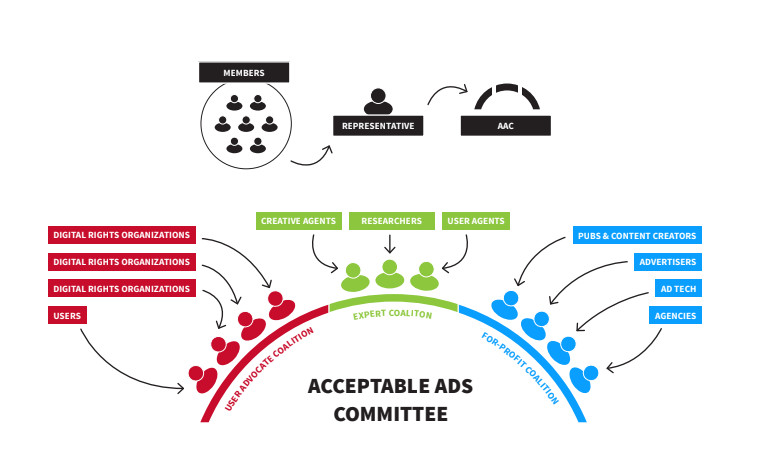The Acceptable Ads Committee (“AAC” / “the Committee”) was charged three years ago with creating standards for ads that ad-blocking users would deem acceptable while also bringing meaningful value to publishers and advertisers.
Three years and four meetings later, the Committee is making more progress than ever before to pioneer sustainable ad standards that are agreeable to ad-blocking users.
The AAC met in New York for the fourth time on May 2, 2019 and we had in-depth discussions around banning browser fingerprinting (which we’d briefly touched on in our meeting last year), as well as the video ad study we are getting ready to conduct.
Regarding browser fingerprinting, the key questions we need to settle include whether we want to include restrictions around browser fingerprinting within the Acceptable Ads standard and, if so, what would be the best way to enforce such a standard. We went on to form a subcommittee that will explore the technical details and the various implications that such a standard would bring about. The key is finding a solution that enhances the protection of users’ privacy while also being realistic for publishers (or ad blockers) to enforce.
The Committee also confirmed our intent to move ahead with a study regarding ad-blocking users’ attitudes towards video ads… I.e. is there such a thing as an “acceptable” video ad, and if so, what are its defining characteristics?
It could well be that there is no such thing as an “acceptable” video ad as far as an ad-blocking user is concerned, but we could also find multiple examples.
Notably, video ads have never been allowed in any iteration of the Acceptable Ads Standard — but they’ve never been tested either. Because regular display ads are less valuable to publishers, and video content is often expensive and time-consuming to produce, video publishers don’t currently have an economically viable way to monetize their ad-blocking users in a respectful, acceptable way.
With the video ads study, we’re hoping to finally solve that problem, and the study will be going live in the coming weeks.
Lastly, the Committee also decided that it would be worthwhile to explore new funding models to help support the participation of Committee member-representatives who work at NGOs, with the aim of further strengthening the user advocate wing of the Committee.
As these organizations are typically small non-profits which strive to represent users’ online rights, their budgets can be tight, which is a challenge, given how critical their role on the Committee is. While their travel costs are reimbursed, we’re looking into various options that would provide funding to incentivize their active participation in the Committee (as a reminder, the AAC’s structure is below).

In other news, we’re excited to welcome three new members to the AAC:
- Amelia Andersdotter from dataskydd.net
- Ratko Vidakovic from Adprofs; and
- Aidan Joyce from Oriel
The Committee is always on the lookout for new members who want to take an active role in helping to shape a sustainable, acceptable advertising ecosystem!
If interested, please reach out to us at committee@acceptableads.org